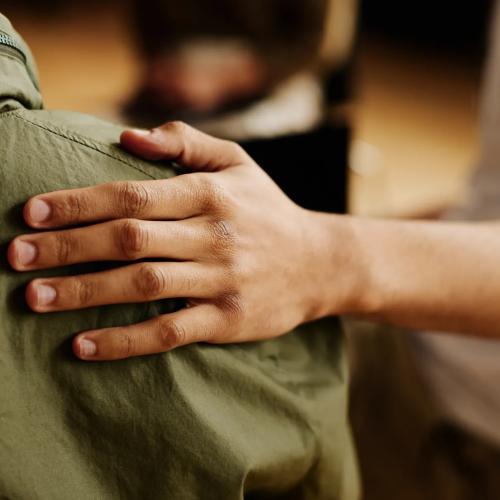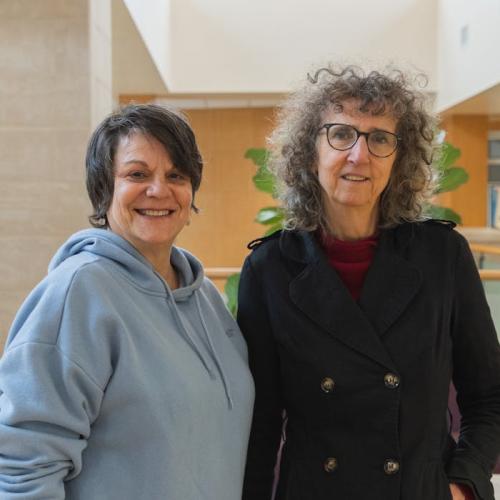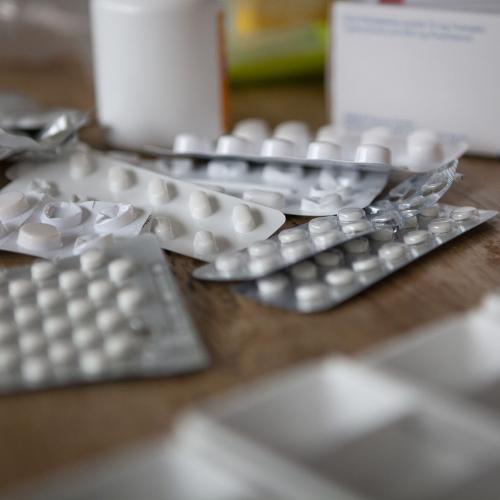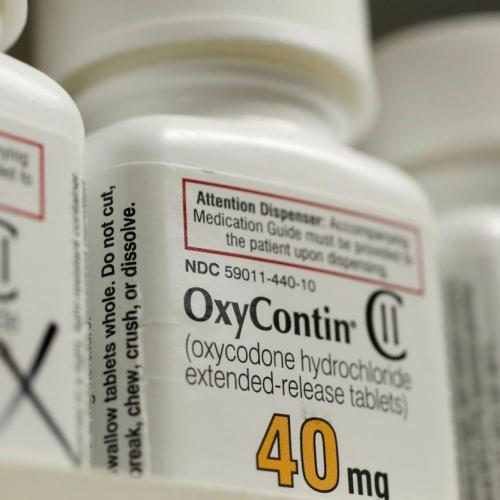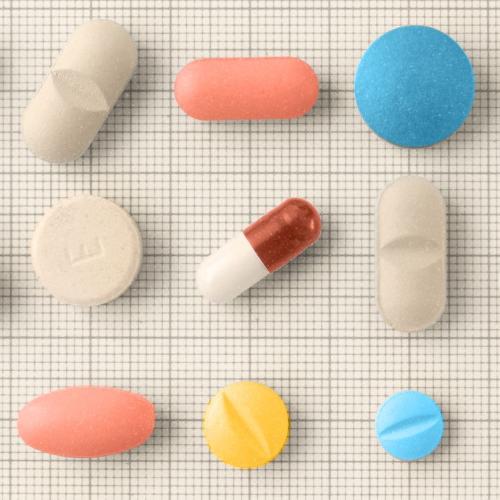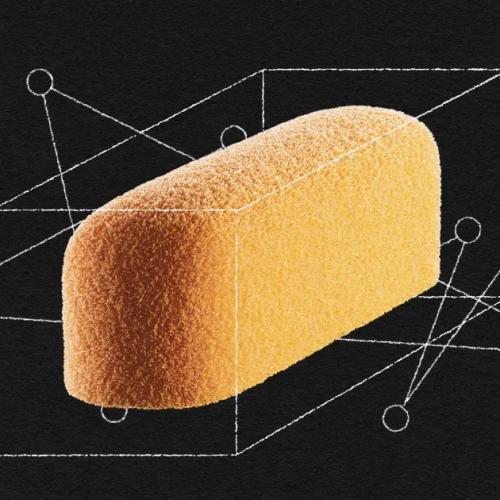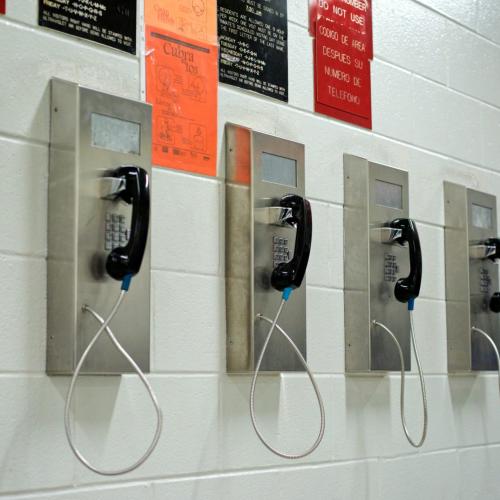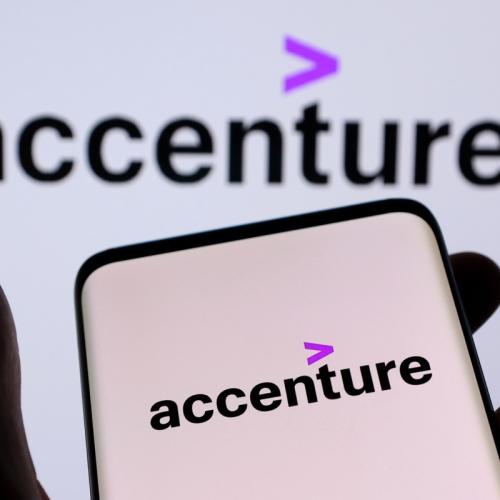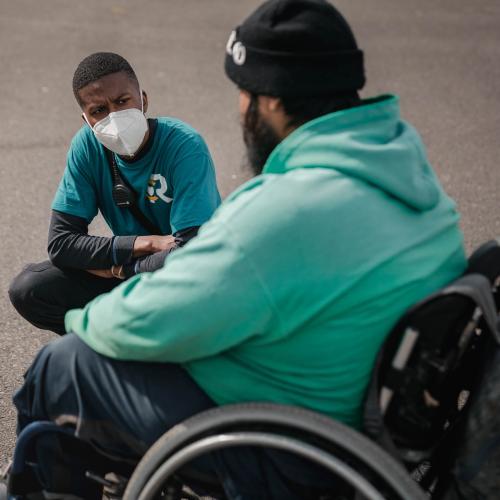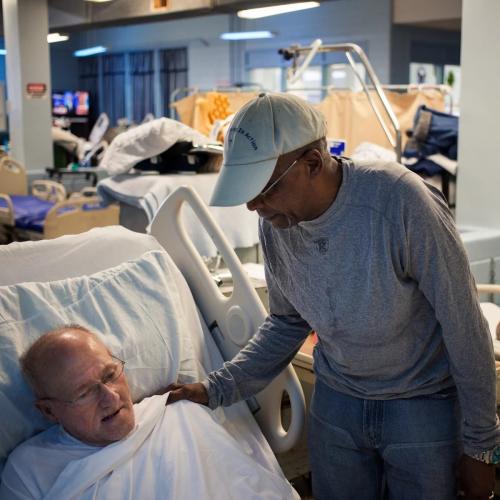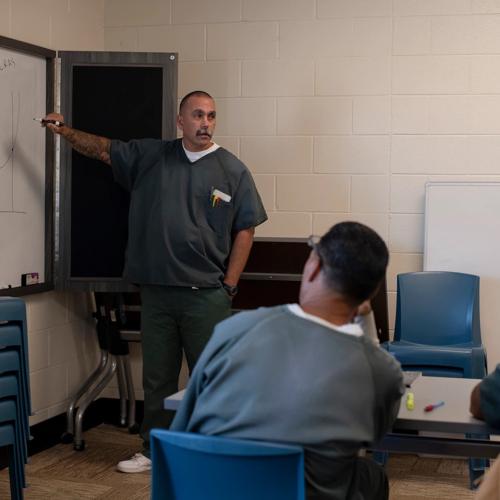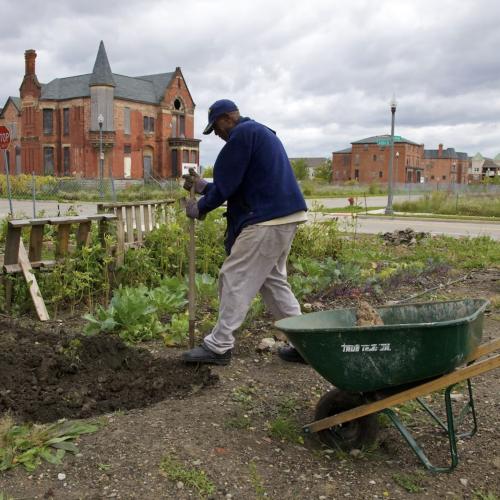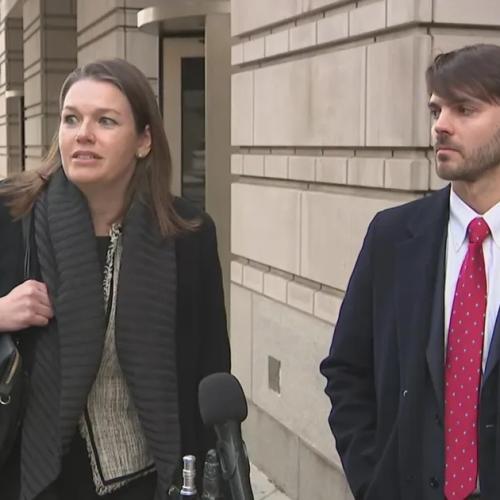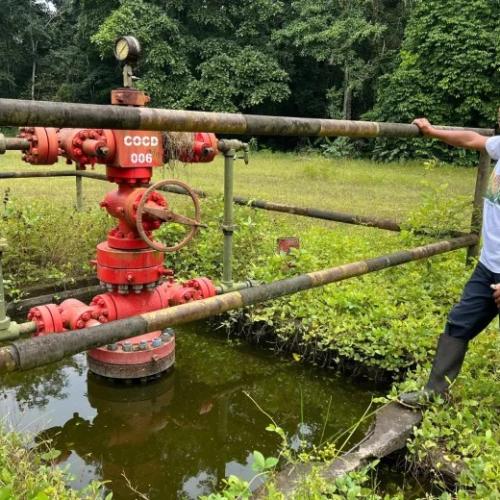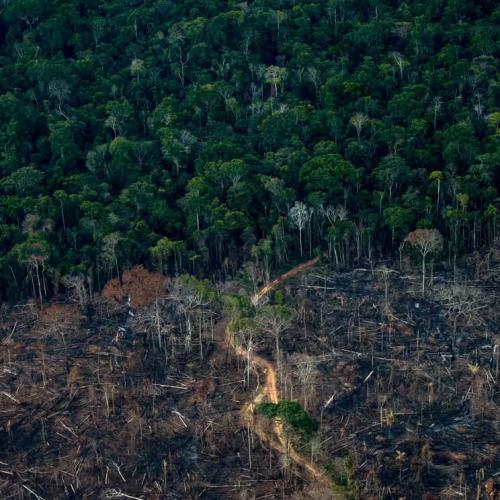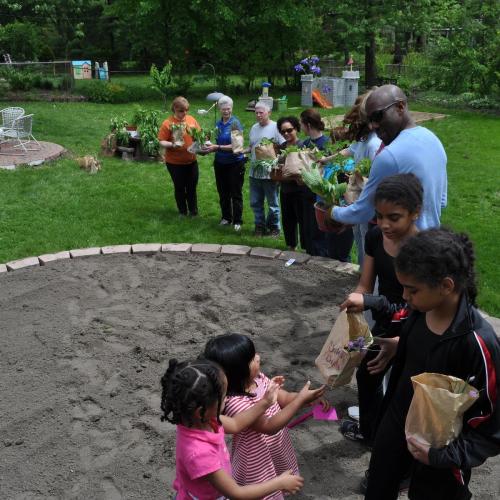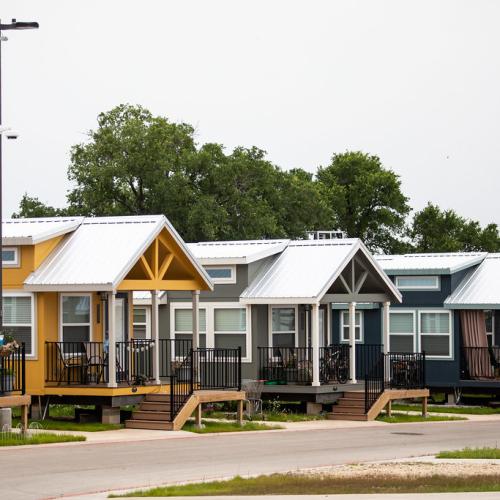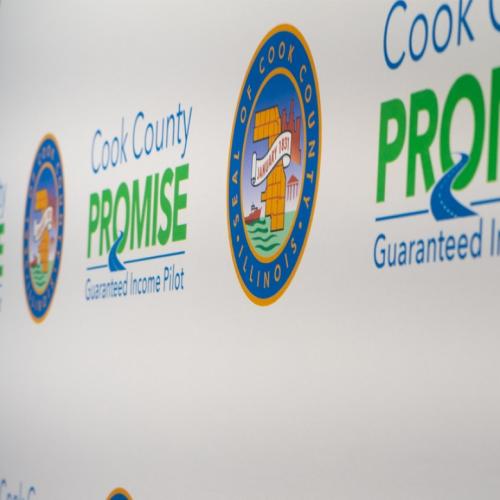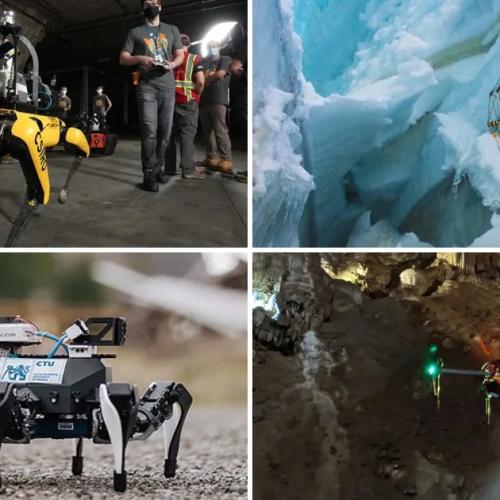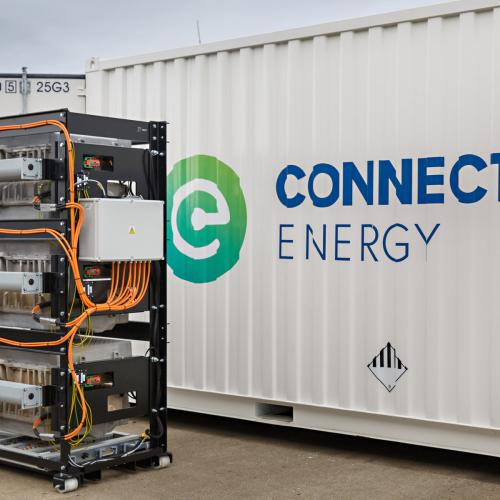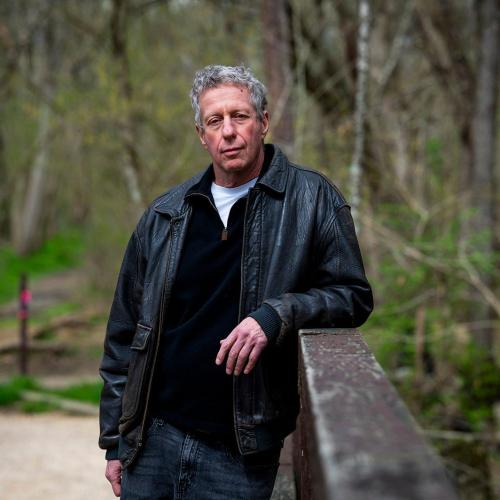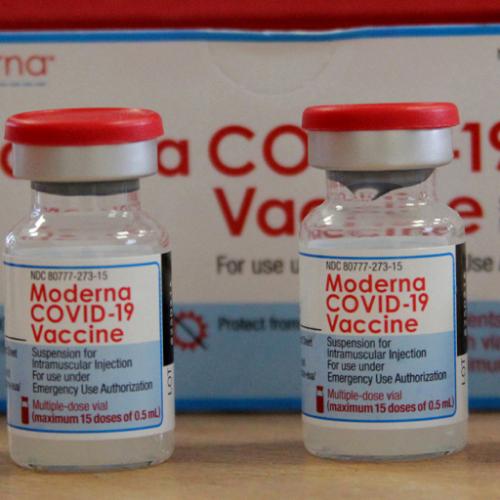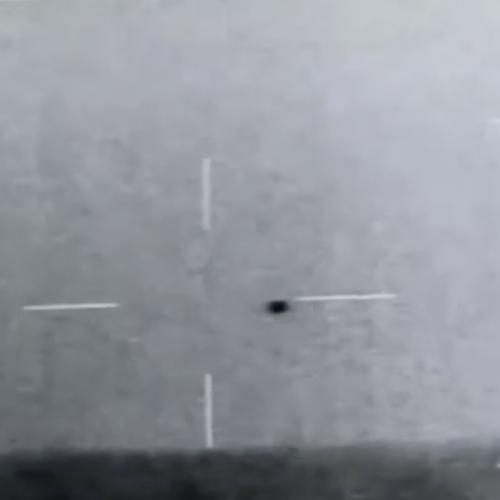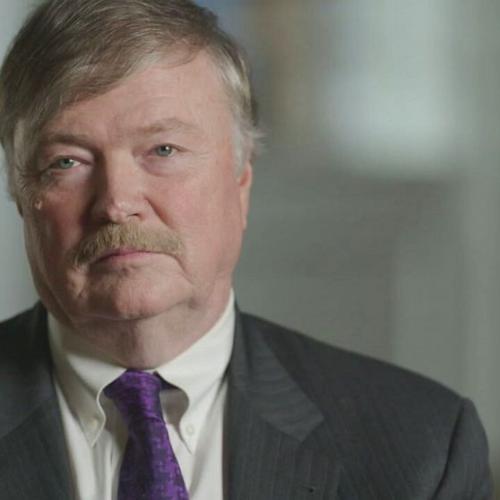Inspiring: Healing Our Earth Media Articles
Below are key excerpts of inspiring news articles on healing our Earth from reliable news media sources. If any link fails to function, a paywall blocks full access, or the article is no longer available, try these digital tools.
For further exploration, delve into our Inspiration Center.
Scientists have developed a "self-digesting plastic", which, they say, could help reduce pollution. Polyurethane is used in everything from phone cases to trainers, but is tricky to recycle and mainly ends up in landfill. However, researchers have come up with a sci-fi like solution. By incorporating spores of plastic-eating bacteria they've developed a plastic that can self-destruct. The spores remain dormant during the useful lifetime of the plastic, but spring back to life and start to digest the product when exposed to nutrients in compost. There's hope "we can mitigate plastic pollution in nature", said researcher Han Sol Kim, of the University of California San Diego, La Jolla. And there might be an added advantage in that the spores increase the toughness of the plastic. "Our process makes the materials more rugged, so it extends its useful lifetime," said co-researcher, Jon Pokorski. "And then, when it's done, we're able to eliminate it from the environment, regardless of how it's disposed." The plastic is currently being worked on at the laboratory bench but could be in the real world within a few years, with the help of a manufacturer, he added. The type of bacteria added to the plastic is Bacillus subtilis, widely used as a food additive and a probiotic. Crucially, the bacteria has to be genetically engineered to be able to withstand the very high temperatures needed to make plastic.
Note: Explore more positive stories about healing the Earth.
At first glance there's nothing particularly remarkable about waxworms. The larval form of wax moths, these pale wriggling grubs feed on the wax that bees use to make their honeycomb. For beekeepers, the pests are something to swiftly get rid of without a second thought. But in 2017 molecular biologist Federica Bertocchini ... stumbled on a potentially game-changing discovery about these creatures. Bertocchini, an amateur beekeeper, threw some of the waxworms in a plastic bag after cleaning her hive, and left them alone. A short time later, she noticed the worms had started producing small holes in the plastic, which begun degrading as soon as it touched the worms' mouths. The worms were doing something that we as humans find remarkably difficult to do: break down plastic. Not only that, but the worms appeared to be digesting the plastic as though it was food. Bertocchini and her fellow researchers began collecting the liquid excreted from the worms' mouths. They found this "saliva" contained two critical enzymes, Ceres and Demeter – named after the Roman and Greek goddesses of agriculture, respectively – which were able to oxidise the polyethylene in the plastic, essentially breaking down that material on contact. Bertocchini is now chief technology officer at bioresearch startup Plasticentropy France, working with a team to study the viability of scaling up these enzymes for widespread use in degrading plastic.
Note: Explore more positive stories about healing the Earth.
Patrick Burrichter did not think about saving lives or protecting the planet when he trained as a chef. But 25 years later he has focused his culinary skills on doing exactly that. On the outskirts of Berlin, Burrichter and his team cook for a dozen hospitals that offer patients a “planetary health” diet – one that is rich in plants and light in animals. Compared with the typical diet in Germany, known for its bratwurst sausage and doner kebab, the 13,000 meals they rustle up each day are better for the health of people and the planet. In Burrichter’s kitchen, the steaming vats of coconut milk dal and semolina dumpling stew need to be more than just cheap and healthy – they must taste so good that people ditch dietary habits built up over decades. The biggest challenge, says Burrichter, is replacing the meat in a traditional dish. Moderate amounts of meat can form part of a healthy diet, providing protein and key nutrients, but the average German eats twice as much as doctors advise. Patients on the wards of Waldfriede praise the choice of meals on offer. Martina Hermann, 75, says she has been inspired to cook more vegetables when she gets home. Followers of the planetary health diet need not abandon animal products altogether. The guidelines, which were proposed by 37 experts from the EAT-Lancet Commission in 2019, translate to eating meat once a week and fish twice a week, along with more wholegrains, nuts and legumes.
Note: Explore more positive stories like this in our comprehensive inspiring news articles archive focused on solutions and bridging divides.
Humans have created 8 billion metric tons of plastic. More than half the plastic ever produced —some 5 billion metric tons — lies smeared across the surface of the Earth. Chemists were creating “synthetic” plastics decades before the oil industry took off, from, among other materials, waste oat husks and vegetable oil. One of the tacks toward more sustainable plastics is to turn back to such biological sources. The ideal materials are not just biodegradable but also compostable — a narrower category that indicates the material can break down into organic components that are harmless to plants and animals. Compostability, unfortunately, is not easily achieved. The natural world already supplies promising polymers that are all compostable, says David Kaplan, a biomedical engineer at Tufts University. [Physicist Eleftheria] Roumeli, for example, has mined the promise of algal cells. They’re small, and therefore easily manipulable; they contain large amounts of proteins, which are biological polymers, alongside other useful materials. She and her students took powdered algae and passed it through a hot presser. After several trials ... they found they could produce a material that was stronger than many commodity plastics. The material was also recyclable: It could be ground back to powder and pressed again. If it were to be carelessly tossed into the dirt, the material would break apart at the same rate as a banana peel.
Note: Explore more positive stories about healing the Earth.
When you imagine a 3D-printed home, you probably picture a boxy concrete structure. As 3D printing’s popularity has grown in the construction industry — thanks to its efficiency when it comes to time, energy and cost — carbon-intensive concrete has become the go-to building material. But a project in Maine has set its sights on something different: a neighborhood of 600-square-foot, 3D-printed, bio-based houses crafted from materials like wood fibers and bioresins. The aim: a complex of 100-percent recyclable buildings that will provide homes to those experiencing houselessness. In late 2022, an initiative between the University of Maine and local nonprofit Penquis unveiled its prototype — BioHome3D, the first 100-percent recyclable house. Now, the pioneering project is working toward completing its first livable housing complex. It will be fully bio-based, meaning all materials will be derived from living organisms such as plants and other renewable agricultural, marine and forestry materials. As the materials are all 100-percent recyclable, so become the buildings. The materials are also all renewable. And thanks to its natural composition, the home acts as a carbon sink, sequestering 46 tons of carbon dioxide per 600-square-foot unit. The materials for this project will mainly come from wood left over by local mills. “The wood fiber material that’s used in the mix is essentially waste wood here in Maine,” says Jason Bird, director of housing development for Penquis.
Note: Don't miss pictures of beautiful homes built by this process at the link above. Explore more positive stories like this in our comprehensive inspiring news articles archive focused on solutions and bridging divides.
Scientists have developed a new type of fuel cell that can provide endless power through electricity harvested from dirt. A team from Northwestern University in the US say the book-sized unit could be used to power sensors used in farming, as well as remote devices in the Internet of Things (IoT). The technology works by generating electricity from naturally-occurring bacteria within the soil, offering a sustainable and renewable alternative to toxic and flammable batteries. “These microbes are ubiquitous; they already live in soil everywhere,” said George Wells ... at Northwestern University. “We can use very simple engineered systems to capture their electricity. We’re not going to power entire cities with this energy. But we can capture minute amounts of energy to fuel practical, low-power applications.” The soil-based microbial fuel cell (MFC) is based on a 113-year-old technology first developed by British botanist Michael Cressé Potter, who was the first person to successfully generate electricity from microorganisms. It took until the 21st century for the first commercial applications to be proposed, with Foster’s Brewing using a prototype to convert the yeast in brewery wastewater into electricity. The latest fuel cell was tested in wet and dry conditions to power sensors measuring soil moisture and detecting touch, outlasting the power of similar technologies by 120 per cent.
Note: Explore more positive stories like this in our comprehensive inspiring news articles archive focused on solutions and bridging divides.
When [city councillor] Alexandre Garcin dreamed up Zero-Waste Roubaix, it wasn’t sustainability he wanted to tackle, but the litter problem that plagued his city. Garcin sent out leaflets looking for 100 volunteers to participate in a free, year-long pilot programme that would teach them how to live waste-free. These familles zéro déchet, or zero-waste families, would receive training and attend workshops on topics such as making your own yoghurt and cleaning with homemade products, with the goal of halving their waste by the year’s end. Volunteers weren’t offered any direct financial incentives to participate – only the promise of helping solve the litter problem and protecting the environment. The project focused on creating an identity around zero-waste and assigning families quantitative waste-reduction targets – strategies that are proven to be effective in other contexts, and everyone got pretty straightforward guidelines – for example, “don’t buy more food than you can eat”. According to Garcin, it’s actually “not that difficult” to halve a household’s waste production. Composting gets you most of the way there, since organic waste makes up about a third of the average French family’s municipal waste by weight. Another third is glass and metal, a significant chunk of which can probably be kept out of the landfill through recycling, and 10% is plastic, much of which can be avoided by finding reusable alternatives to plastic grocery bags, cutlery, packaging and other single-use items.
Note: Explore more positive stories like this in our comprehensive inspiring news articles archive focused on solutions and bridging divides.
For now, it’s only a gaping hole in the ground. But when construction is complete next April, the Lower Sioux—also known as part of the Mdewakanton Band of Dakota—will have a 20,000-square-foot manufacturing campus that will allow them to pioneer a green experiment, the first of its kind in the United States. They will have an integrated vertical operation to grow hemp, process it into insulation called hempcrete, and then build healthy homes with it. Right now, no one in the US does all three. Once the tribe makes this low-carbon material, they can begin to address a severe shortage of housing and jobs. Recapturing a slice of sovereignty would be a win for the Lower Sioux. They lost most of their lands in the 19th century, and the territory finally allotted to them two hours south of Minneapolis consists of just 1,743 acres of poor soil. That stands in contrast to the fertile black earth of the surrounding white-owned farmlands. Nearly half of the 1,124 enrolled members of the tribe need homes. “The idea of making homes that would last and be healthy was a no-brainer,” said Robert “Deuce” Larsen, the tribal council president. Leading the national charge on an integrated hempcrete operation is no mean feat, seeing that virtually no one in the community had experience with either farming or construction before the five-person team was assembled. Hemp can grow in a variety of climates. What’s more, hemp regenerates soil, sequesters carbon, and doesn’t require fertilizers.
Note: Explore more positive stories like this in our comprehensive inspiring news articles archive focused on solutions and bridging divides.
In most of Europe, fitting a heat pump is one of the most powerful actions a person can take to reduce their carbon footprint. But in Norway, where clean-yet-inefficient electrical resistance heaters have long been common, upgrading to a heat pump is often a purely financial decision. Two-thirds of households in this Nordic country of 5 million people have a heat pump, more than anywhere else in the world. For many years, Norwegians and their neighbours heated their homes with fossil fuels. But during the 1973 oil crisis, when prices shot up, the country’s political leaders made a conscious choice to promote alternatives. “Norway ensured early on that fossil-fuel heating was the most expensive option, making heat pumps cost competitive,” said Dr Jan Rosenow from the Regulatory Assistance Project, a thinktank that works to decarbonise buildings. “They did this by taxing carbon emissions from fossil heating fuels. That’s been the key to incentivise heat pump adoption.” Norway also trained up a workforce to install them. Heat pumps’ efficiency has been increased over decades, partly because of the early adopters in Nordic countries who tinkered away to the point where a modern version can deliver three to five units of heat for every unit of electricity used to power it. An efficient gas boiler, on the other hand, can only produce as much heat as the energy contained in the fuel being burned. A heat pump will have a smaller carbon footprint than a gas boiler even when plugged into an electricity grid.
Note: Explore more positive stories like this in our comprehensive inspiring news articles archive focused on solutions and bridging divides.
Microplastics — solid plastic particles up to five millimeters in size that are not biodegradable — are pretty much everywhere. They have been detected in over 1,500 different marine animal species. They also find their way into our bodies via the water cycle and the food chain. In fact, the average person consumes up to five grams of microplastics per week. The European Union has now banned intentionally added microplastics. This applies to plastic glitter or polyethylene particles used as abrasives in scrubs, shower gel and toothpaste (these have been banned in the US since the 2015 Microbead-Free Waters Act). Under the terms of the ban, some products, such as plastic glitter found in creams or eye shadow, have been granted a transitional period to give manufacturers a chance to develop new designs. LUSH and The Body Shop are among the companies that have long been offering natural alternatives, using ground nuts, bamboo, sea salt and sugar. Beiersdorf AG ... has not used microbeads for exfoliation purposes since 2015. Instead, it has used, for example, cellulose particles or shredded apricot kernels. Since the end of 2019, all Beiersdorf wash-off products have been free of microplastics. Before the EU ban, Germany stopped providing public funding for artificial turf pitches with granules containing a high proportion of microplastic. As a result, the country already has hundreds of pitches that are filled with cork and sand instead of microplastics.
Note: Explore more positive stories like this in our comprehensive inspiring news articles archive focused on solutions and bridging divides.
Dutch sewage waste is being seen as a reliable heat source for millions of homes that the government wants to be unhooked from the country’s gas system by 2050. Lieven de Key, a housing corporation in Amsterdam, is planning what is believed to be the first sewer warmth project that will tap into a main district sewage pipe to warm 1,600 existing social and student homes. “We have a photo of the street covered with snow, and the manhole covers all without snow,” says Jeroen Rademaker, the project leader. “Even when there’s snow in the winter, the sewer is warm. Warm sewage water flows 24 hours a day and we should capture it. This can happen wherever there is a big sewage pipe.” “The warmth comes from showers, the toilet, wastewater from washing, from the dishwasher, from the washing machine,” says Postuma. “Together it all gives, throughout the year, a temperature between 15 and 18 degrees. And we are going to make a bypass around the main sewer, put a heat exchanger around it and bring it to the houses in insulated pipes. We place it in an electric heat pump, and the water is heated up to 60 or 70C – medium temperature.” The heat exchanger transfers that source heat from the drain to a working fluid that can be transported to the buildings without needing to circulate the actual sewage waste. Then the blocks’ heat pumps, fired by solar energy, can amplify that heat in the opposite way to the workings of a refrigerator.
Note: Explore more positive stories like this in our comprehensive inspiring news articles archive focused on solutions and bridging divides.
The power's out. But on a street in India, there's a cash machine still happily dispensing banknotes. Thanks, in part, to burnt cotton. For this cash machine has a backup battery inside it – a battery that contains carbon from carefully combusted cotton. "The exact process is secret," says Inketsu Okina, chief intelligence officer at PJP Eye, the Japanese firm that made the battery. "The temperature is secret and atmosphere is secret. Pressure is secret," he continues. Okina does say that a high temperature is required, above 3,000C (5,432F). And that 1kg (2.2lbs) of cotton yields 200g (7oz) of carbon – with just 2g (0.07oz) needed for each battery cell. PJP Eye also touts the possibility of improving battery performance as well as making batteries greener. "Our carbon has a bigger surface area than graphite," says Okina, describing how the chemistry of the anode in their Cambrian single carbon battery allows for a battery that charges very quickly, up to 10 times faster than existing lithium ion batteries, he claims. The battery's cathode is made from a "base metal" oxide. Although Okina won't disclose exactly which one, these metals include copper, lead, nickel and zinc. The company claims to be working on a dual carbon electrode battery, where both electrodes are made from plant-based carbon. Other researchers are looking at using materials as diverse as corn waste and melon seed shells to generate new types of electrodes for use in batteries.
Note: Explore more positive stories like this in our comprehensive inspiring news articles archive focused on solutions and bridging divides.
If you were to imagine the first car-free neighborhood built from scratch in the modern US, it would be difficult to conceive such a thing sprouting from the environs of Phoenix, Arizona. But it is here that such a neighborhood, called Culdesac, has taken root. On a 17-acre site ... an unusual experiment has emerged that invites Americans to live in a way that is rare outside of fleeting experiences of college, Disneyland or trips to Europe: a walkable, human-scale community devoid of cars. Culdesac ushered in its first 36 residents earlier this year and will eventually house around 1,000 people. Residents are provided no parking for cars and are encouraged to get rid of them. The apartments are also mixed in with amenities, such as a grocery store, restaurant, yoga studio and bicycle shop, that are usually separated from housing by strict city zoning laws. The $170m Culdesac project shows “we can build walkable neighborhoods successfully in the US,” according to Ryan Johnson, the 40-year-old who co-founded the company. “We look back nostalgically at college, because it’s the only time most people have lived in a walkable neighborhood. People are happier and healthier, and even wealthier when they’re living in a walkable neighborhood.” Vanessa Fox, a 32-year-old who moved into Culdesac with her husky dog in May, had always wanted to live in a walkable place only to find such options unaffordable. For her, Culdesac provided a sense of community without having to rely on a car.
Note: Explore more positive stories like this in our comprehensive inspiring news articles archive focused on solutions and bridging divides.
For millennia, humans have used dried natural sponges to clean up, to paint and as vessels to consume fluids like water or honey. Whether synthetic or natural, sponges are great at ensnaring tiny particles in their many pores. And, as scientists around the world are beginning to show, sponges’ cavity-filled forms mean they could provide a solution to one of our era’s biggest scourges: microplastic pollution. In August, researchers in China published a study describing their development of a synthetic sponge that makes short work of microscopic plastic debris. In tests, the researchers show that when a specially prepared plastic-filled solution is pushed through one of their sponges, the sponge can remove both microplastics and even smaller nanoplastics from the liquid. Optimal conditions allowed the researchers to remove as much as 90 percent of the microplastics. The plastic-gobbling sponges are made mostly from starch and gelatin. Looking a bit like large white marshmallows, the biodegradable sponges are so light that balancing one atop a flower leaves the plant’s petals upright and unyielding, which the researchers suggest ought to make them cheap and easy to transport. The sponges, if ever produced at an industrial scale ... could be used in wastewater treatment plants to filter microplastics out of the water or in food production facilities to decontaminate water. It would also be possible to use microplastic-trapping sponges like this in washing machines.
Note: Explore more positive stories like this in our comprehensive inspiring news articles archive focused on solutions and bridging divides.
In 2023, Seabed 2030 announced that its latest map of the entire seafloor is nearly 25% complete. The data to make the world's first publicly available map is stored at the International Hydrography Organization (IHO)'s Data Centre for Digital Bathymetry. 17 research vessels owned by American universities ... constantly circle the globe studying the deep ocean. The ocean mappers came up with a new plan: crowdsourcing. By attaching a data logger to a boat's echosounder, any vessel can build a simple map of the seafloor. Tion Uriam, the head of the Hydrographic Unit at the Republic of Kiribati's Ministry of Communications, Transport and Tourism Development, recently received two data loggers that he's planning to install on local ferries. "It's a win to be part of that initiative," he says. "Just to put us on the map and raise our hands [to say] we want to be part of a global effort." The military or commercial value of nautical charts will always be a barrier. "Sea charts were destined to be removed from the academic realm and from general circulation," wrote the map historian Lloyd Brown. "They were much more than an aid to navigation; they were the key to empire, the way to wealth." [Marine geologist Kevin] Mackay experienced this on a scientific-mapping expedition. He received a call from a military he chooses not to name and "they said 'you need to destroy that data because there was military value ... it's a place where submarines like to hide'," he recalls. "Obviously, we ignore them because we're [mapping] for science, we don't care."
Note: Explore more positive stories like this in our comprehensive inspiring news articles archive focused on solutions and bridging divides.
Friluftsliv [is] a way of being that is part of the Norwegian national identity. The term was coined by the playwright Henrik Ibsen in his 1859 poem On the Heights, although the concept is much older. Its literal translation is “free-air life”, but Ibsen used it to convey a spiritual connection with nature. To modern Norwegians, it means participating in outdoor activities, but also has a deeper sense of de-stressing in nature and sharing in a common culture. An astonishingly high percentage of Norwegians report spending time outdoors. A survey in June by the market research company Kantar TNS found that 83% are interested in friluftsliv, 77% spend time in nature on a weekly basis and 25% do so most days. At many nurseries, toddlers spend 80% of their time outside; at school, there are special days throughout the year when children go out in nature and build campfires. Studies show that being in green spaces helps reduce anxiety and improve cognition. In a 2020 survey, 90% of Norwegians said they felt less stressed and in a better mood when they spent time in nature. Helga Synnevåg Løvoll, a professor of friluftsliv at Volda University College, says the five documented ways to wellbeing can be achieved through friluftsliv (they are “connect”, “be active”, “take notice”, “keep learning” and “give”). This nature-induced wellbeing could be one reason why Norway ranks among the happiest countries in the world. It came seventh in the UN’s World Happiness report in 2023.
Note: Read about the rise of "green prescription" programs in different healthcare systems around the world. Explore more positive stories like this in our comprehensive inspiring news articles archive focused on solutions and bridging divides.
When Anthony Myint and his wife Karen Leibowitz opened their San Francisco restaurant The Perennial in 2016, they had big ambitions: They wanted it to be the first carbon-neutral restaurant in the world, and they succeeded. From the recycled floor tiles and reclaimed lumber to the aquaponic herb garden and compostable paper menus, the culinary duo designed every part of the diner with the climate in mind. “We shifted the menus, reduced food waste, switched to renewable energy, started composting and bought carbon offsets,” Myint says. They were motivated by the knowledge that agriculture and food systems contribute nearly a third of greenhouse gas emissions worldwide. The Perennial’s menu championed sourdough loaves baked with perennial Kernza grains, and the chefs bought their steaks from regenerative ranches associated with the Marin Carbon Project, the country’s foremost center for regenerative farming. The more Myint learned about regenerative agriculture, the more he became convinced that this was the global solution he needed to champion. “It became clear to me that this is the future of food, similar to the way renewable energy is the future of energy,” he says. “The whole food system needs to gradually transition.” Zero Foodprint is asking restaurant customers and other participating businesses to give one percent of their sales to a pool that funds regenerative agriculture. More than 80 businesses have signed up.
Note: We've summarized a handful of stories about the power of regenerative agriculture practices to reverse and heal global ecological destruction. Explore more positive stories like this in our comprehensive inspiring news articles archive focused on solutions and bridging divides.
At the highest point of Los Tres Miradores, a terrifyingly steep urban settlement with soaring views across Peru’s capital, Lima, there is a curious set of large structures that resemble a fleet of ships in the sky. They are so-called “fog catchers.” About 40 of these netted devices, made of high density Raschel polyethylene and spanning several meters wide, are lined up atop a misty mound and linked by a network of tubes that lead to storage containers. Home to a population of more than 10 million, Lima is one of the driest cities in the world. [The nonprofit] El Movimiento Peruanos sin Agua has helped install 600 fog catchers across Lima and a total of 2,000 across Peru, including in the regions of Arequipa, Iquitos and Cuzco. According to [founder Abel] Cruz, one man he supported is even able to raise 1,000 chickens thanks to fog catchers. In June, the project received a significant boost when it signed an agreement with the Mayor of Lima to install 10,000 more fog catchers in the hills surrounding the city in the next four years. The municipality ... said the project has the potential to “reforest, create ecological lungs, ecotourism and at the same time provide water for human consumption, for bio-orchards, botanical gardens, washing clothes, utensils and more.” In Los Tres Miradores, the 40 fog catchers — which were installed in 2021 — provide enough water for 180 families, whether to bathe, clean, drink (after being filtered at home) or to irrigate crops on small garden patches.
Note: Explore more positive stories like this in our comprehensive inspiring news articles archive focused on solutions and bridging divides.
The solution to stopping climate change might be buried on 10 acres in the Pauma Valley of California. “The idea is not just to produce food but to improve the soil,” says Alvarez, Solidarity Farm’s Climate Resilience Specialist. “We stopped using the plow to turn the soil, and we do a lot of composting and mulching to improve our soil health.” Solidarity Farm had used organic principles in the 10 years since its inception, but it pivoted to carbon farming after the extreme heat in the summer of 2017. Carbon farmers cultivate plants and trees in a way that maximizes carbon sequestration in the soil. Among the most important practices for carbon farmers are minimizing soil erosion by planting perennials and ground cover, which also lowers soil temperatures, and only working the land by hand or with low-tech solutions. “The soil has the capacity to store more carbon than all plants on the planet together,” Alvarez says. Solidarity Farms produces a diverse range of about 60 different fruits and vegetables, at least 70 percent of them perennial crops such as plums and pomegranates. Stacks of organic chicken manure in front of the vegetable beds wait to be distributed. The farmers enrich the soil with compost and mulch, while deterring pests with diverse crop rotation. According to soil tests, the Solidarity farmers have tripled the amount of carbon in the ground since 2018. “This equates to a drawdown of nearly 600 metric tons of CO2 per year, offsetting the emissions of 80 American households,” Alvarez says.
Note: Have you seen the groundbreaking and inspiring movie Kiss the Ground? In a time where we're told hopeless and divisive narratives about our current environmental challenges, people all over the world are reversing the damage from destroyed ecosystems, regenerating the world's soils, and creating abundant food supplies. Don't miss this powerful film on the growing regenerative agriculture movement and its power to revive global community and our connection to the natural world.
Gardening and community gardens can be ways for immigrant and refugee communities to supplement their pantries by growing their own food, especially culturally appropriate food that is not readily found in grocery stores. It also helps people send literal roots down into a new place while maintaining a connection with their homeland. The Arab American National Museum (AANM) has created a new heritage garden on its roof with donated seeds, cuttings, and plants from local Arab American community members around Dearborn, Michigan. These include plants with a connection to the Arab world, but also plants from Michigan that have become meaningful to the Arab American community here. Accompanying the plants in the garden are oral histories of those community members about what gardening means to them, collected by the museum’s community historian. In Ann Arbor, Michigan, Phimmasone Kym Owens ... said, ‘Why don’t I create a garden for refugees?’” In 2021, Owens reached out to Jewish Family Services of Washtenaw County. They formed a partnership to create an innovative refugee-to-refugee community garden program ... and to work with refugees and grow culturally appropriate vegetables. “What sold this as being different is giving autonomy to the clients,” Owens said. “So we had a vote. They voted [for] Freedom Garden. And that’s a name that says it all. The fact that they chose Freedom Garden says exactly what you know, being a refugee, what you want.”
Note: Explore more positive stories like this in our comprehensive inspiring news articles archive focused on solutions and bridging divides.
Important Note: Explore our full index to key excerpts of revealing major media news articles on several dozen engaging topics. And don't miss amazing excerpts from 20 of the most revealing news articles ever published.








